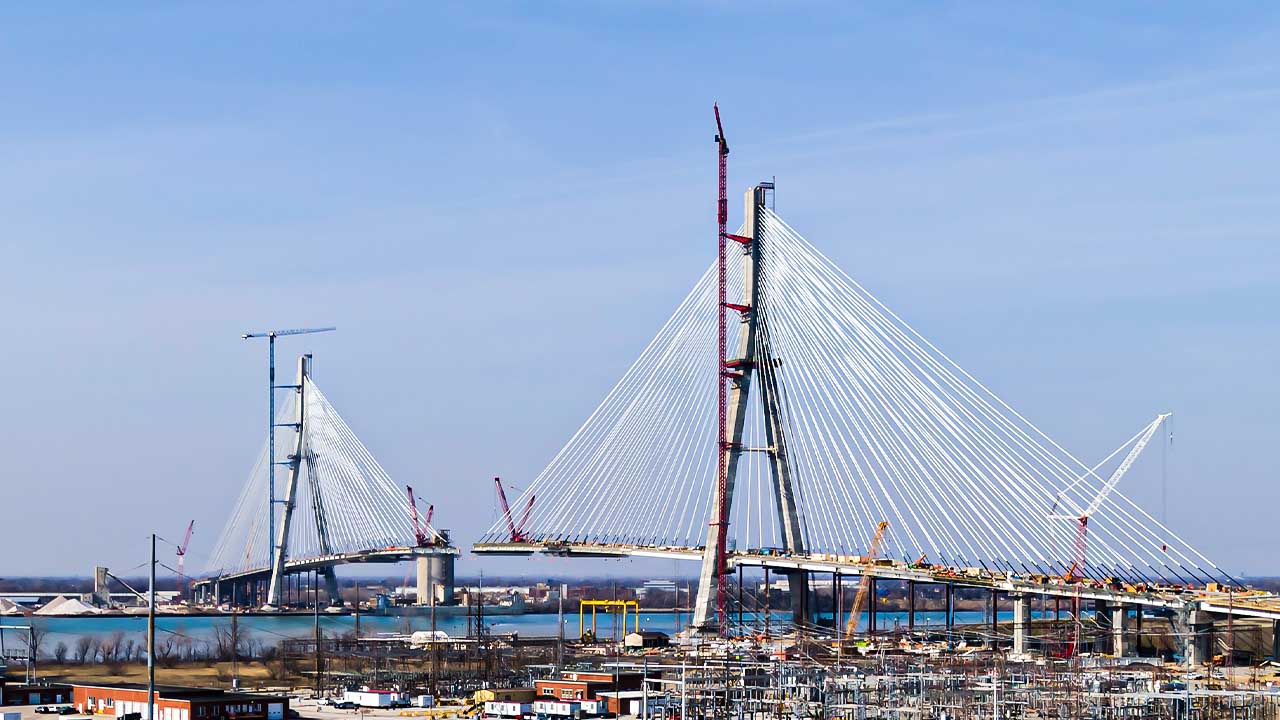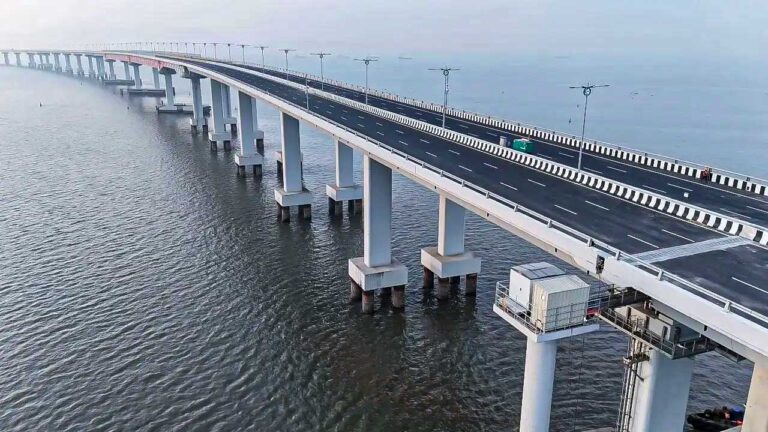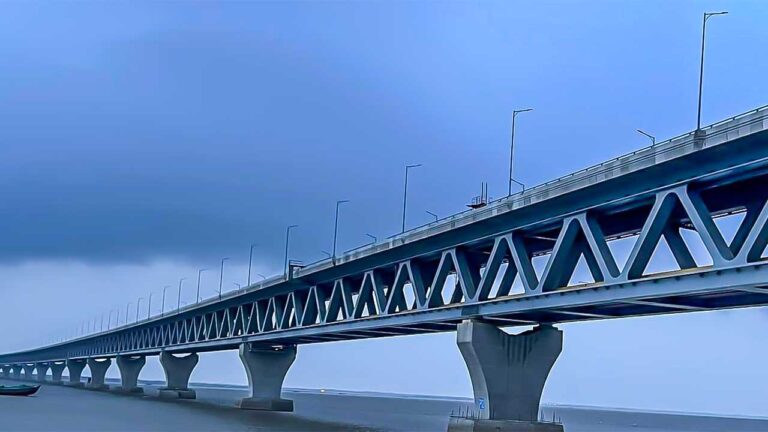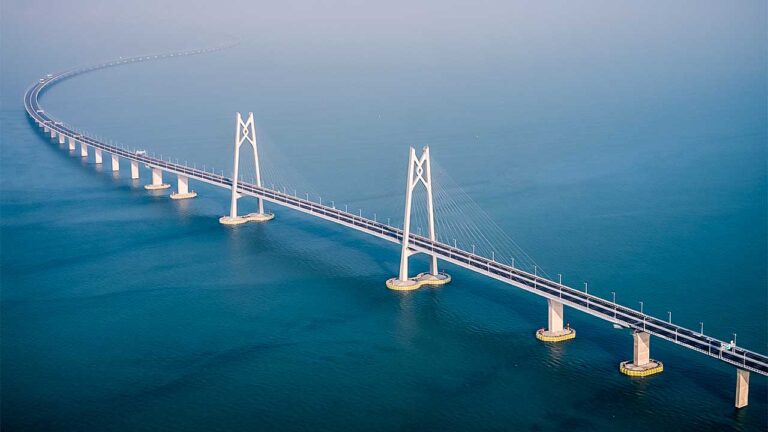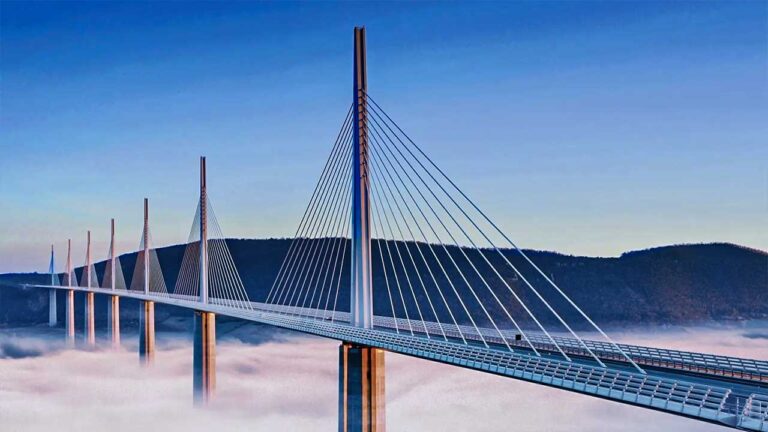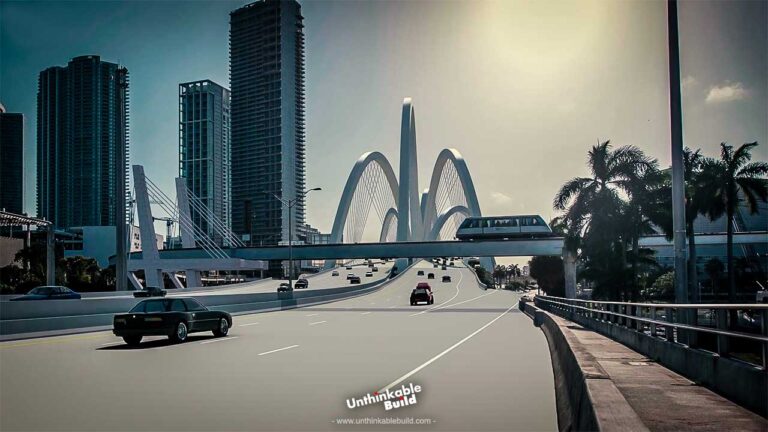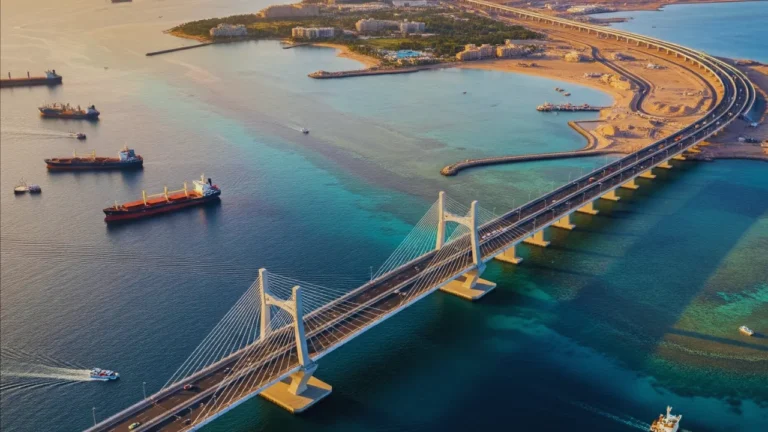Gordie Howe Bridge Marks Milestone 2000 Days Into Construction
The bond between the United States and Canada is truly unique, defined by friendship, neighborliness, and partnership, all deeply entrenched in shared values, historical connections, and mutual aspirations for the future.
Geographic proximity plays a pivotal role, as the two nations share the longest border in the world, stretching over 8,891 kilometers. This physical closeness underscores the interconnectedness and interdependence between the two countries.
The frequency of road travel between the United States and Canada is notable, owing to the extensive network of land border crossings that facilitate movement between the two countries. With over 100 land border crossings available, travelers have numerous options for crossing between the U.S. and Canada. However, wait times at these crossings can vary significantly, influenced by factors such as the time of day and the day of the week.
The Gordie Howe International Bridge is a major infrastructure project connecting Windsor, Canada, and Detroit, USA. The bridge is designed to facilitate the safe, efficient, and secure movement of people and goods across the Detroit River.
Construction of the Gordie Howe International Bridge started on October 5, 2018, with a substantial budget of $6.5 billion. The project team recently celebrated a significant milestone on March 27, 2024, marking 2,000 days of construction and over 12 million hours worked.
The Gordie Howe International Bridge, formerly referred to as the Detroit River International Crossing and the New International Trade Crossing, is a cable-stayed international bridge presently in the construction phase over the Detroit River. This bridge to link Detroit, Michigan, USA, and Windsor, Ontario, Canada, was first proposed in the early 2000s.
Also Read: Gordie Howe International Bridge Longest Cable-Stayed Bridge in North America
The construction of the 2.5 km long Gordie Howe International Bridge is advancing swiftly, with the achievements over the past 2,000 days standing as a testament to the team’s unwavering dedication. As of April 26, 2024, the bridge’s 220-meter tall towers have been successfully completed.
The bridge deck over the Detroit River is nearly complete, with only 10 of the 56 segments left to install. Likewise, just 20 of the 216 stay cables remain to be set. The temporary structure bents that supported the back span of the bridge have been gracefully removed, and all 40 steel edge girders in the approach spans, linking the bridge to both Ports of Entry, are firmly in place.
At the Canadian and US Ports of Entry, paving of lanes, parking lots, and roadways is in full swing, while painting and floor installation have begun inside 10 of the 12 buildings. In the meantime, one segment of the 3 km Sandwich Street reconstruction project has been completed, with another currently underway and a third set to launch this spring.
Once completed, the bridge will stretch 2.5 km with an 853-metre span over the water, ranking among the five longest bridges in North America. With the longest main span of any cable-stayed bridge in North America, measuring 853 meters, it promises to be an engineering marvel.
On the U.S. side, the port of entry will span 68 hectares, housing border inspection facilities. Meanwhile, on the Canadian side, the port of entry will cover 53 hectares, featuring border inspection facilities, toll collection, and bridge maintenance facilities. Additionally, the bicycle and walking path will integrate with new and existing trails, along with bike lanes on both sides of the Detroit River.
On each side of the bridge, there are 108 stay cables, totaling 216. The deck, weighing approximately 300 tonnes for every 15-meter segment between these cables, is a remarkable feat of engineering.
Within each stay cable, there will be between 38 and 122 rope-like metal strands. If laid end to end, these strands would extend roughly 5,000 kilometers, spanning a distance from Windsor almost to Alaska.
The cables link the deck to the 220-meter towers, designed to mimic the curvature of a hockey stick mid-slapshot. Each tower leg is reinforced by six shafts, penetrating 36 meters into the bedrock, akin to the height of an 11-storey building.
This transformative bridge will feature three lanes in each direction, accompanied by an additional lane for emergencies, with the capability to accommodate two more lanes in the future.
The Gordie Howe International Bridge assures not just a cutting-edge transportation link but also meticulously planned and visually appealing ports of entry on both the Canadian and U.S. sides.
As part of the project, various pieces of public art are being incorporated. Artist Sara Graham contributed a piece involving cast concrete patterns on the exterior of a maintenance building. Additionally, sculptor Michael Belmore is crafting a 2.7-meter high sculpture honoring and celebrating First Nations, while artist Jordan Sook has been commissioned to create an artwork commemorating the Underground Railroad. Furthermore, another artist will be tasked with designing architectural lighting for the bridge.
In conjunction with the bridge construction, $20 million was earmarked for diverse community benefit projects in both the United States and Canada. These initiatives encompassed assistance for local community groups, enhancements to neighborhood parks and trails, and upgrades to local streets. Additionally, grants were provided for home improvements in Delray and to the Walpole Island First Nation.
By offering an additional crossing point between Windsor and Detroit, the bridge will augment the overall capacity for vehicles traversing the border. This expansion in capacity holds the potential to alleviate congestion on existing crossings, thus enhancing the flow of traffic.
The inclusion of dedicated truck lanes on the bridge will facilitate the smoother movement of commercial traffic. This segregation of passenger vehicles and trucks is poised to enhance efficiency and reduce congestion along the route.
Furthermore, the bridge will serve as a viable alternative route for travelers, particularly during peak hours. By providing an alternative path, the bridge can divert traffic away from other nearby routes, thereby mitigating congestion and improving overall traffic flow.
The implementation of modern facilities and streamlined processes at the border crossing is expected to contribute to reduced wait times for inspections. This enhancement in border processing capabilities holds the promise of further optimizing traffic flow and reducing congestion.
Excitement is building for the Gordie Howe International Bridge project team as they embark on the final steps to connect the bridge deck over the Detroit River. With just 26 meters remaining, it is anticipated that the two sides will join by the end of June 2024.
Crews will first install a 15-meter segment on the US side before starting work on the final segment, known as the mid-span closure. Once connected, the bridge deck spanning the distance between the two iconic towers will measure 853 meters, making it the longest main span of any cable-stayed bridge in North America and the tenth longest in the world. Additionally, it will feature the longest composite steel and concrete bridge deck of any cable-stayed bridge globally.
The Gordie Howe International Bridge will also feature a dedicated multi-use path for pedestrians and cyclists, enhancing its accessibility and utility for the communities on both sides of the border.
Experts predict that by 2025, the bridge will handle over 26,500 vehicles per day between the two nations, significantly streamlining cross-border movement of people and goods. For those seeking more detailed information, the official Gordie Howe International Bridge website offers comprehensive resources.
The Gordie Howe International Bridge stands as a monumental bi-national infrastructure project, linking Windsor, Canada, and Detroit, USA. This ambitious endeavor holds immense significance for several reasons.
Also Read: The World’s Most Massive Suspension Bridges
As a vital trade corridor, the bridge serves as a conduit for the efficient movement of goods and people across the Detroit River, bolstering the economies of both regions. Situated within the busiest trade corridor in North America, it facilitates nearly 30% of Canada-US truck trade.
The bridge’s design incorporates a dedicated multi-use path, catering to pedestrians and cyclists, thereby enhancing connectivity between Windsor and Detroit. Additionally, community benefits are woven into the project’s fabric, with initiatives like the Malden Park Observation Area and the reconstruction of Sandwich Street, positively impacting local residents and businesses.
The Gordie Howe International Bridge holds the promise of boosting trade, job creation, and economic growth for generations to come. This once-in-a-generation undertaking heralds positive impacts on both sides of the border, symbolizing a beacon of connectivity and prosperity.
Every sector pitches in to propel the country forward, but roads take center stage in this narrative. There’s a common belief that progress hits a roadblock when the roads are in poor condition, holding back development in some areas.

